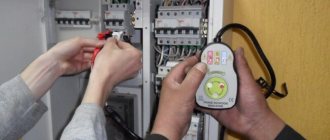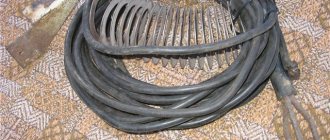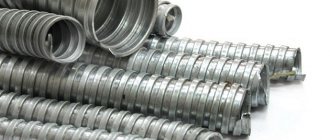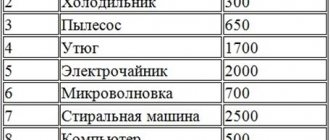Optical cable repair and features of its implementation
Current telecommunications are based on fiber optic communications.
This type of cable network is used to organize systems of any level (both local and intercontinental lines). Specialists use high technology when organizing linear connection elements, but it is not possible to completely eliminate the risk of damage to the cable during operation. Sometimes accidents occur even on structures with a high level of mechanical strength and round wire armor. If damage is observed, operators use the following methods to restore the communication line:
- 1. Switching to a backup direction - ensuring the fastest possible restoration of system functionality.
- 2. Reconstruction of the fiber optic cable - the complex is undergoing a comprehensive restoration in order to restore the stable functioning of the network.
Causes of defects in fiber optic cables
Defects in the optical cable network system appear due to the development of such situations:
- 1. Direct mechanical impact (mainly all kinds of construction equipment).
- 2. Move the support clamp at the insertion point.
- 3. In the event of a direct lightning strike (such risks increase significantly when the cable is equipped with metal armor, as well as when laying communications on rocky soil or in permafrost conditions).
The first situation involves a high level of effort and sudden impact. Therefore, a wire break may occur. In other situations, a partial violation of the integrity of the system may be observed. Therefore, it takes quite a long time to ensure high-quality communications.
Diagnostics and repair of fiber-optic communication lines
FOCL diagnostic technology. Troubleshooting:
- Damage to the light guide connecting cord (FCC)
- Fiber damage along the construction length
- Damage to the fiber in the optical coupling
has moved to a modern level of customer service and uses fiber optic cable in its work. Internal and external communication networks have been successfully replaced with high-quality fiber optic lines. Such lines are less susceptible to damage and fail much less often than copper wires.
Installation of modern communication systems
Masters are engaged in providing technical premises, commercial buildings and their own homes with all types of utilities. The company monitors the IT technology market and offers its customers modern installations:
- modern alarm and fire safety systems;
- installation of video surveillance for any objects and apartments;
- development of an evacuation system from a building of any type.
The organization has its own electrical laboratory engaged in the development and testing of existing communications. Engineers are constantly improving cable systems and installations in accordance with international standards.
Professionals work with the following types of cable:
- single-mode type - has a high price and is used to install a high-quality signal; features minimal signal loss and is used when laying networks over long distances; an integral component of such a line is a laser device for receiving and transmitting a light signal;
- multimode type - the signal is refracted in steps and has several paths; This condition provokes minor wave distortions.
FOCL structure
To pass the light beam through the cable, mods are needed. Their number is directly proportional to the increase in the areas of use of fiber-optic communication lines. The standard fiber optic cable design is:
- the optical fibers themselves through which the signal is received;
- steel protection - a tube into which fibers are threaded;
- copper conductors through which an electric charge passes;
- a layer of thin metal - foil;
- cable insulation with an additional protective layer.
The insulating layer can withstand direct sun rays, natural precipitation, and low temperatures. These characteristics allow the cable to be supplied over the air or connected to external communications.
Elimination of line damage and repair of fiber-optic communication lines
The laid cable network made of optical fiber is highly resistant to various types of damage. However, there are factors of intentional damage or mechanical damage during construction work.
In this case, repair of fiber-optic communication lines is classified in the following areas:
- eliminating damage to the connecting cord;
- working with damaged fibers at construction length;
- soldering of broken fibers placed in an optical coupling.
Repair technicians install a special protective sleeve on the damaged section of the core. The device is used for external lines exposed to natural factors. If the work is carried out indoors, then fiber optic repair involves welding and installation of a wall distribution cable on the damaged area.
Work order
For welding work, craftsmen use professional automatic soldering stations that operate at high temperatures. Using such devices, the following work is performed:
- precise combination of fiberglass;
- the soldering process itself;
- applying an insulating layer to the repaired area.
Using professional equipment, the master of Elektroservismontazh LLC removes the insulating layer of the cable with a special tool until a glass core appears. The coupling and each component module are thoroughly cleaned. There can be 4–8 pieces of the latter in isolation.
Glass fibers stripped of insulation must be degreased. To repair fiber-optic lines, special gel products are used.
At the next stage, the master glues the glass strands, strictly observing the perpendicular joining of the sections. The quality of such a connection will determine the nature of the signal passage along the communication line.
The formation of new insulation is a necessary stage of repair work. Before soldering the fibers, a thermal sleeve is put on one end of the wire. This device has a built-in power rod that ensures high quality work.
Diagnostics of fiber optic cable lines
For this stage of work, professional engineers use proven models of devices and new developments. The equipment tests and certifies a repaired or newly installed line.
The performed diagnostics of fiber-optic communication lines uses the following methods.
- Testing power parameters. In this case, single-mode and multimode fibers are included in the work. The device measures the size of the signal transmitted through the fiber and the power parameters received at the other end of the cable.
- The volume of optical losses is considered a universal diagnostic method. The device is a set consisting of an optical measuring device and the laser source itself. This technique is used at all stages of testing.
- The diagnostics of the optical fiber allows us to evaluate the quality of the newly connected glass cores. In these ways, the quality of transmitted waves is tested, and areas with a decrease in signal strength are identified.
Any cooperation with Elektroservismontazh LLC is supported by official contractual documents. Clients receive a guarantee for the work performed and equipment provided.
Nuances in the field of repairing fiber optic cables
Reconstruction of an optical cable network, first of all, begins with performing an integrity check, as well as localizing the damaged area. At this stage, specialists use optical reflectometry. The device displays a backscatter curve, which allows you to correctly determine the distance to the location of the defect, as well as the nature of the damage that has occurred.
When forming a fiber optic line, it is prohibited to lay the cable with a reserve length (the exception is the technological reserve that allows connecting the wiring). Consequently, cable reconstruction almost always involves the installation of an insert. The junction of the cable pieces is reliably protected using a coupling. This device opens up possibilities in the placement of fiber splices, while ensuring the restoration of the protective function of the shell. If the technological nuances are observed, a guarantee of tensile strength of up to 75% of the values indicated in the cable specification appears.
Main Causes of Fiber Damage
Damage can occur for various reasons, the main ones being:
-under mechanical influence;
- in Figure 2 you can observe another reason - water getting into the supporting clamp;
- when lightning strikes the optical fiber. It should be noted that the risk of lightning striking a cable with metal armor is much higher.
The first reason most often leads to the fact that the optical cable simply breaks and you just need to identify this place, solder it or simply replace a certain section. In all other cases, the cable may retain its functionality, however, if restoration measures are not taken in a timely manner, it will still fail.
Quality control of repair operations
The restoration of the optical cable system at the final stage involves the implementation of testing. This measure is carried out by taking measurements with a reflectometer on both sides of the restored line. The purpose of the task is to establish the quality of the reconstruction, namely, to establish compliance with the attenuation standards of the working wavelength (1310 and 1550 nm) in splices. Additionally, using an optical tester, specialists diagnose attenuation between the connectors of the system’s hardware components. The results of the measurements performed are recorded in the appropriate protocol, which is sent to the archive of line operational reports.
Optical cable repair and features of its implementation
Fiber optic communications are the foundation of modern telecommunications and are used at all levels of the network: from local inside buildings to intercontinental lines. Despite the use of well-developed technologies for organizing the linear part of such systems, the risks of damage to the fiber-optic cable during ongoing operation cannot be completely eliminated. Accidents occur even in the case of the most mechanically strong structures with round wire armor, Fig. 1.
In case of damage, the operator uses two main methods to restore communication:
— switching to a backup direction; — fiber optic cable repair.
The first of them is aimed at quickly restoring communication, while the main goal of the second is to completely restore the normal operation of the line.
Causes of Fiber Optic Cable Damage
Damage to optical cables can occur:
— as a result of mechanical impact, mainly from various construction equipment; - as a result of movements at the insertion point into the supporting clamp, Fig. 2; - in case of direct lightning strikes (the risks of such damage increase markedly in the presence of metal armor, as well as laying cables in rocky soils and permafrost conditions).
In the first case, due to the large forces and the sudden nature of their impact the optical cable is most likely to break ; in other cases, some of the fibers can maintain integrity and even provide normal communication for some, sometimes quite a long time.
Features of fiber optic cable repair
The restoration of an optical cable begins with checking its integrity and localizing the point of its damage, for which optical reflectometry is used. An experienced reflectometer, by looking at the shape of the backscatter curve generated by the device, not only determines the distance to the location of the damage, but also its nature.
On fiber-optic communication lines, it is expressly prohibited to lay length reserves, with the exception of technological reserves, without which welding is impossible. Therefore, restoration of the optical cable in the vast majority of cases is carried out by installing an insert. The connection between the cable and the insert is protected by a coupling, Fig. 3. A high-quality coupling not only allows you to place fiber splices in it, but also ensures complete restoration of the protective coating of the sheaths, and also, if the assembly technology is followed, guarantees resistance to tensile forces of up to 75% of the specification value of the cable being repaired.
Repair quality control
Optical cable repair requires final testing. In the process of performing this procedure, reflectometry of the restored line is carried out by measuring on both sides, the purpose of which is to determine the quality of the repair and, in particular, compliance with attenuation standards at operating wavelengths (1310 and 1550 nm) in splices. Additionally, the optical tester also checks the overall attenuation from connector to connector of the equipment. The results of the measurements are recorded in a protocol, which is stored in the operational documentation of the line.










